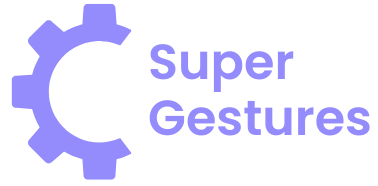Table of Contents
ToggleIn a world where everyone seems to be a coding whiz, it’s easy to feel left behind. But fear not! Web coding tutorials are here to rescue those who’ve been struggling with more than just the occasional typo. Whether you’re a complete newbie or someone who thinks HTML is a new sandwich at the deli, these tutorials can turn you into a coding ninja faster than you can say “404 error.”
Overview of Web Coding Tutorials
Web coding tutorials provide essential resources for individuals at any skill level. Beginners looking to learn the basics of HTML or CSS find it easier through structured guides. More experienced learners enhance their skills with advanced tutorials covering JavaScript frameworks or backend programming.
Interactive platforms offer real-time coding environments. Participants can practice as they learn, solidifying their understanding of concepts. Many tutorials feature video content, making complex topics more accessible. Visual learners often benefit from these formats, as they can see coding in action.
Numerous online educational platforms curate extensive libraries of tutorials. Websites like Codecademy and freeCodeCamp offer comprehensive courses tailored to various interests. Many resources also include quizzes and projects, allowing learners to apply skills immediately.
Communities around coding tutorials foster collaboration. Learners often engage in forums to discuss topics or solve problems together. Mentorship opportunities arise within these communities, connecting beginners with experienced developers sharing insights and guidance.
Tracking progress through coding challenges is also a common feature. Gamified elements motivate learners to persist in their studies. Achieving small milestones builds confidence and encourages continued exploration of more complex subjects.
Free resources are plentiful, though paid options frequently offer extensive support and resources. Investing in high-quality tutorials can provide a structured learning path and additional mentorship opportunities. Whatever the chosen method, web coding tutorials empower individuals to thrive in the digital landscape.
Types of Web Coding Tutorials
Web coding tutorials fall into various categories, catering to a range of skill levels and learning styles.
Beginner Tutorials
Beginner tutorials introduce fundamental programming concepts like HTML and CSS. They typically feature step-by-step guides that simplify complex topics. Structured lessons often include exercises to reinforce learning. Many platforms provide interactive coding environments to enhance practical understanding. Users can find resources that cover essential skills, such as creating simple webpages or styling elements with CSS. Video content often accompanies written instructions, making it easier to follow along. Comprehensive beginner tutorials lay a strong foundation for future learning.
Advanced Tutorials
Advanced tutorials target individuals with foundational knowledge seeking to deepen their expertise. Topics can include JavaScript frameworks, backend development, or database management. These tutorials often explore complex subjects in depth, challenging learners to implement sophisticated techniques. Resources frequently consist of real-world projects that enhance practical skills. Many advanced courses incorporate coding challenges or peer review systems to facilitate collaborative learning. Engaging with these resources helps coders refine their problem-solving abilities and prepares them for professional development.
Popular Platforms for Web Coding Tutorials
Numerous platforms offer diverse web coding tutorials catering to various learning styles. Online learners can select from video tutorials or written tutorials, both of which effectively enhance coding skills.
Video Tutorials
Video tutorials stand out for their engaging and visual learning approach. They often include step-by-step demonstrations, making complex concepts easier to grasp. Platforms like YouTube and Udemy host numerous high-quality tutorials targeting beginners and advanced learners alike. For example, Codecademy integrates videos into its courses, providing visual aids that complement hands-on practice. Many users appreciate the ability to pause and rewind tutorials, allowing them to revisit challenging segments as needed. This on-demand flexibility empowers learners to progress at their own pace.
Written Tutorials
Written tutorials offer structured, in-depth content appealing to readers who prefer text-based learning. They often include comprehensive explanations, practical examples, and code snippets. Websites like W3Schools and MDN Web Docs specialize in providing clear, detailed written guides covering languages ranging from HTML to JavaScript. Readers often find these resources helpful for referencing specific topics or concepts. Moreover, many written tutorials incorporate interactive elements like quizzes, reinforcing knowledge retention. The combination of detailed text and real-world examples equips learners with practical skills necessary for their coding journeys.
Benefits of Learning Through Web Coding Tutorials
Web coding tutorials offer numerous advantages for individuals at all skill levels. First, they provide structured learning paths, allowing beginners to grasp fundamental concepts such as HTML and CSS effectively. Interactive platforms enable real-time coding environments, which facilitate hands-on practice during learning, leading to better retention of knowledge.
Tutorials often include video content that breaks down complex topics into manageable segments. With comprehensive explanations and practical examples, resources like W3Schools and MDN Web Docs ensure that learners can understand intricate details of coding languages. Such materials cater to various learning preferences and help users absorb information in their preferred format.
Many platforms integrate quizzes to reinforce concepts, promoting active engagement with the material. Gamified elements motivate students by tracking their progress, encouraging persistence through challenges, and providing a sense of achievement with each completed milestone. These elements make learning coding less daunting and more enjoyable.
Communities built around these tutorials foster collaboration among learners, allowing for discussion and mentorship opportunities. This support network can significantly boost confidence and keep learners engaged as they navigate the complexities of coding. Participants can seek guidance, share experiences, and learn from one another’s journeys.
Both free and paid resources are available, each with unique benefits. Free options provide access to a wide range of materials, while paid platforms often offer enhanced support and more structured educational experiences. Such diversity empowers learners to choose what suits their needs and goals best.
Ultimately, web coding tutorials transform novices into proficient coders and equip individuals with essential skills for successful careers in the digital landscape. They create an accessible avenue for anyone eager to explore the world of coding and technology.
Challenges Faced by Learners
Learners encounter various challenges when diving into web coding tutorials. Understanding the technical jargon can be difficult for beginners, creating confusion around fundamental concepts. Many face frustration when grasping the intricacies of programming languages such as HTML, CSS, and JavaScript.
Time management presents another hurdle. Balancing tutorial work with personal responsibilities is tough, causing some to feel overwhelmed. Recognizing their own pace becomes essential for these learners, as they often compare themselves to others who seem to progress faster.
Accessing resources can also prove challenging. While tutorials offer valuable insights, not all platforms cater to diverse learning styles. Some struggle with video content, preferring text-based guides instead, while others find interactive exercises lack the depth they require for complex topics.
Self-doubt often creeps in as learners measure their progress. Tracking milestones is crucial, yet many feel inadequate when faced with coding challenges. Frequent setbacks can discourage them, making it difficult to stay motivated throughout their coding journey.
Finding a supportive community is vital, but it isn’t always easy. Some learners seek collaboration, yet they may not know where to find peer groups or mentors willing to provide guidance. Engaging in forums can lead to valuable connections, though initial hesitance often stifles participation.
Paid resources offer structured learning paths, but they come at a financial cost that some may struggle to afford. While free platforms abound, their support levels vary, limiting learner experience. Seeking effective tutorials requires diligent research, but patrons might also find themselves overwhelmed by the sheer volume of options available online.
Navigating these challenges often shapes a learner’s coding journey, making perseverance crucial. Each obstacle provides insight into developing resilience and adaptability in a rapidly evolving digital world.
Web coding tutorials serve as invaluable resources for anyone looking to enhance their coding skills. They offer structured paths that cater to various learning styles and skill levels. With engaging video content and interactive exercises, learners can grasp complex concepts more easily.
The supportive communities surrounding these tutorials foster collaboration and mentorship, helping individuals overcome challenges. Whether opting for free or paid resources, learners have the flexibility to choose what best suits their needs. Ultimately, these tutorials empower individuals to thrive in a digital landscape, transforming novices into confident coders ready to tackle real-world projects.




